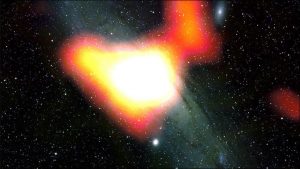 NewDelhi: A new black hole discovered by Russian astronomers has been dedicated to the late British scientist Stephen Hawking, who devoted his entire life to studying the universe.
NewDelhi: A new black hole discovered by Russian astronomers has been dedicated to the late British scientist Stephen Hawking, who devoted his entire life to studying the universe.
The newborn black hole, which lies in the Ophiuchus constellation, was spotted two days after Hawking’s demise after scientists from the Moscow State University observed a “gamma-ray burst” in the constellation.
The burst was caused by the collapse of a star that, in turn, led to the formation of a black hole in its place.
In gamma-ray astronomy, gamma-ray bursts (GRBs) are extremely energetic explosions that have been observed in distant galaxies. They are the brightest electromagnetic events known to occur in the universe.
While gamma-ray bursts are a frequent occurrence and can be observed on almost a daily basis, it is nearly impossible to refocus a telescope to capture the release of energy, which may last anywhere from milliseconds to tens of seconds.
This time, however, the Russian astronomers got lucky.
According to a report in RT, the extremely energetic explosion was captured by a MASTER-IAC robotic telescope installed in Tenerife, Spain, which managed to focus on a star fast enough to capture an increase in its brightness and obtain information about its source.
“MASTER devoted this optical discovery to Stephen Hawking, the Lord of Black Holes,” Russian researchers wrote in the Astronomer’s Telegram journal.
The discovery was registered under the name GRB180316A.
Best known for his work on black holes, the cosmologist theorized that contrary to the prevailing scientific belief that black holes were inescapable for all forms of matter and energy, they actually emitted a form of radiation – now known as Hawking radiation.
The theoretical physicist passed away in the early hours of March 14 at the age of 76, following complications due to amyotrophic lateral sclerosis (ALS) – a progressive neurodegenerative disease.
Leave a Reply